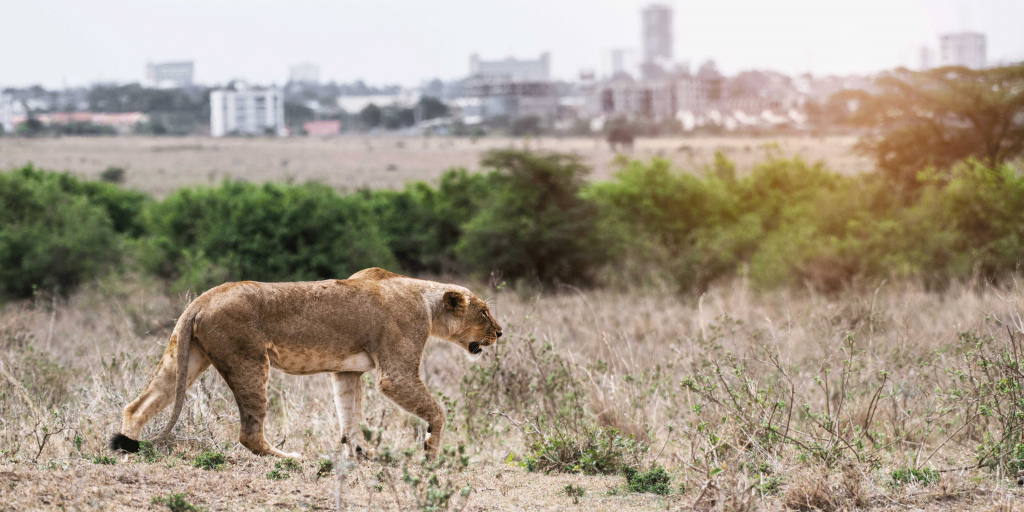
This article is part of the ISC’s Transform21 series, which features resources from our network of scientists and change-makers to help inform the urgent transformations needed to achieve climate and biodiversity goals.
The congress will be an important space to set out ambitions for the post-2020 Global Biodiversity Framework due to be considered at the forthcoming 15th meeting of the Conference of the Parties to the Convention on Biological Diversity (CBD COP15), as well as for the UN Climate Change Conference (COP26).
The event comprises hundreds of sessions addressing different conservation issues, as well as a Members’ Assembly in which IUCN’s 1,300+ member organizations discuss and vote on actions to address conservation and sustainable development challenges.
We’ve gathered some of the issues likely to be talking points at the 2021 event:
Since 1964, IUCN has compiled a list assessing the status of different species and classifying them according to how vulnerable to extinction they are. The ‘red list’, which now covers 138,300 species, is updated at least twice a year, often timed to coincide with the congress or with other major conservation events (such as CBD COP meetings). It’s a snapshot of the numbers of threatened species around the world, helping to provide an indicator of how well conservation efforts are progressing.
The update released over the weekend included the news that four different species of commercially fished tuna were showing signs of recovery, demonstrating that action to enforce fishing quotas and combat illegal fishing is having an effect. However, the IUCN cautioned that global improvements at the species level can hide regional differences, and that many regional tuna stocks remain depleted. The list also called attention to the plight of the Komodo dragon, which has been moved from ‘vulnerable’ to ‘endangered’ status due to habitat loss from human activities and climate change.
As part of the meeting, IUCN members will vote on motions intended to tackle illegal wildlife trafficking. If approved, the motions would see IUCN members call on governments to work with the private sector on wildlife trafficking, and to take stronger measures to tackle the online market for illegal wildlife products, such as ivory from elephant tusks, or pangolin scales. Advances in technology and connectivity have made it easier for poachers to connect with potential buyers and sellers of illegal wildlife products, with Interpol estimating that wildlife crime is rising at 2-3 times the rate of the global economy. The motion would call upon governments and technology companies to strengthen their efforts to crack down on online trafficking, and to collaborate across borders to investigate the transnational networks behind wildlife crime.
Earlier this year, the G7 group of countries released a statement calling for the world to go ‘nature positive’, an idea explored in the Locke et al. paper A Nature-Positive World: The Global Goal for Nature, which sets out ambitious targets to immediately halt and reverse nature loss by 2030, and to work towards ‘full recovery’ by 2050. Inspired by the way ‘net zero’, or carbon neutrality, has become a widely adopted, compelling message, the ‘nature positive’ approach aims to establish a similar, easy-to-understand target for protecting biodiversity. A global goal for nature, say its proponents, would work alongside the Sustainable Development Goals and Paris Agreement, as none of the targets is achievable without the others. The campaign has already received high-level support in business and policy circles, and through 2022 the Earth Commission will work on developing quantitative targets for the boundary conditions required to strengthen biosphere functions towards the nature positive goal.
In all discussions of how to improve biodiversity protection, one issue looms large: finance. It’s estimated that US$ 78-91 billion is spent annually on protecting global biodiversity, and most of this expenditure is domestic. For low-income countries, or countries with economies in transition, financing much-needed biodiversity protection is a major concern. Key questions for congress attendees include directing more public funding for biodiversity to developing countries, improving monitoring and reporting on finance, and how to mobilize the financial sector to scale up the range and size of funds for private investment in nature-based solutions.
Conservation measures based around protected areas are increasingly debated, with critics arguing that the creation of ‘fortress’-like protection areas may displace communities, including indigenous people with traditional land rights. Seen in this context, the ‘30 by 30’ movement to protect at least 30% of land by 2030 is denounced as a threat to human rights. Others argue for moving beyond protected areas for nonhuman species towards a model of living with nature in a way that incorporates the needs of both humans and nonhumans. A recently published policy brief by the UN Special Rapporteur on Human Rights and the Environment, David R. Boyd, and Stephanie Keene, further adds to the debate with a call for a rights-based approach to conserving, restoring and sharing the benefits of biodiversity, carried out in partnership with Indigenous peoples and rural and community groups, who are increasingly recognized as effective stewards of biodiversity.
You can follow all the latest discussions and watch recordings from the congress on twitter with #IUCNcongress.

CON-VIVA: Towards Convivial Conservation: Governing Human-Wildlife Interactions in the Anthropocene is one of the projects funded through the Transformations to Sustainability (T2S) programme.
CON-VIVA is grounded in the premise that conservation is critical to transformations to sustainability but that its practices need to change radically. By comparing by cutting-edge conservation cases, CON-VIVA investigates the prospects for ‘convivial conservation’.
Find out more about CON-VIVA on the T2S website.
Photo by Nikola Bačanek on Unsplash.